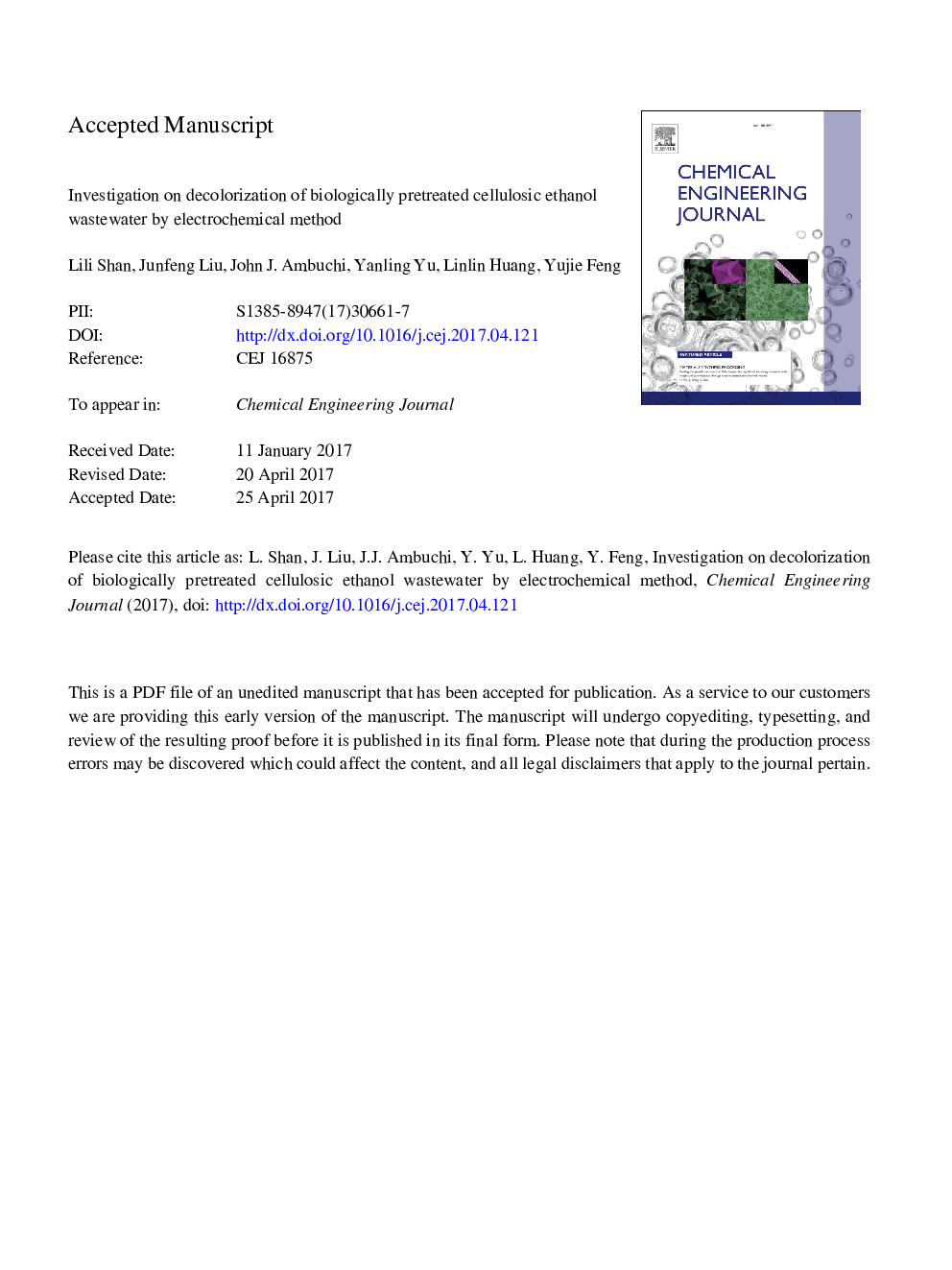| Article ID | Journal | Published Year | Pages | File Type |
|---|---|---|---|---|
| 4763058 | Chemical Engineering Journal | 2017 | 41 Pages |
Abstract
The biologically pretreated cellulosic ethanol wastewater poses a serious environmental concern because of its refractory and color compounds. The decolorization of electrochemical oxidation using Sb doped Ti/SnO2 electrode for advanced treatment of cellulosic ethanol wastewater under different current density (5-30 mA·cmâ2), initial pH (3-8.9) and supporting electrolyte (0-0.25 M NaCl) was investigated in this study. Complete decolorization, 8.5% chemical oxygen demand (COD) and 69.1% dissolved organic carbon removal efficiencies were achieved under the optimal conditions (20 mA·cmâ2, pH 5 and supporting electrolyte of 0.1 M NaCl) after 150 min. The energy consumption required to meet National Discharge Standard (GB 27631-2011) is 93.8 kWh kg CODâ1. Further investigation revealed that hydroxyl radicals played a primary role in the degradation of organic contaminants, while active chlorine formed from chloride oxidation played a less important role. Direct anodic oxidation and indirect reaction via peroxodisulfate generated from sulfate oxidation could be negligible. The formation of chlorination by-products appeared to be low since the final total Trihalomethanes concentration detected was 263 µg Lâ1, with the detection of chloroform as the main Trihalomethanes.
Related Topics
Physical Sciences and Engineering
Chemical Engineering
Chemical Engineering (General)
Authors
Lili Shan, Junfeng Liu, John J. Ambuchi, Yanling Yu, Linlin Huang, Yujie Feng,
